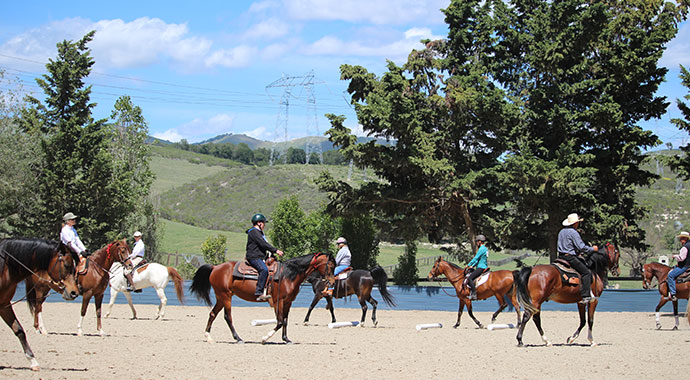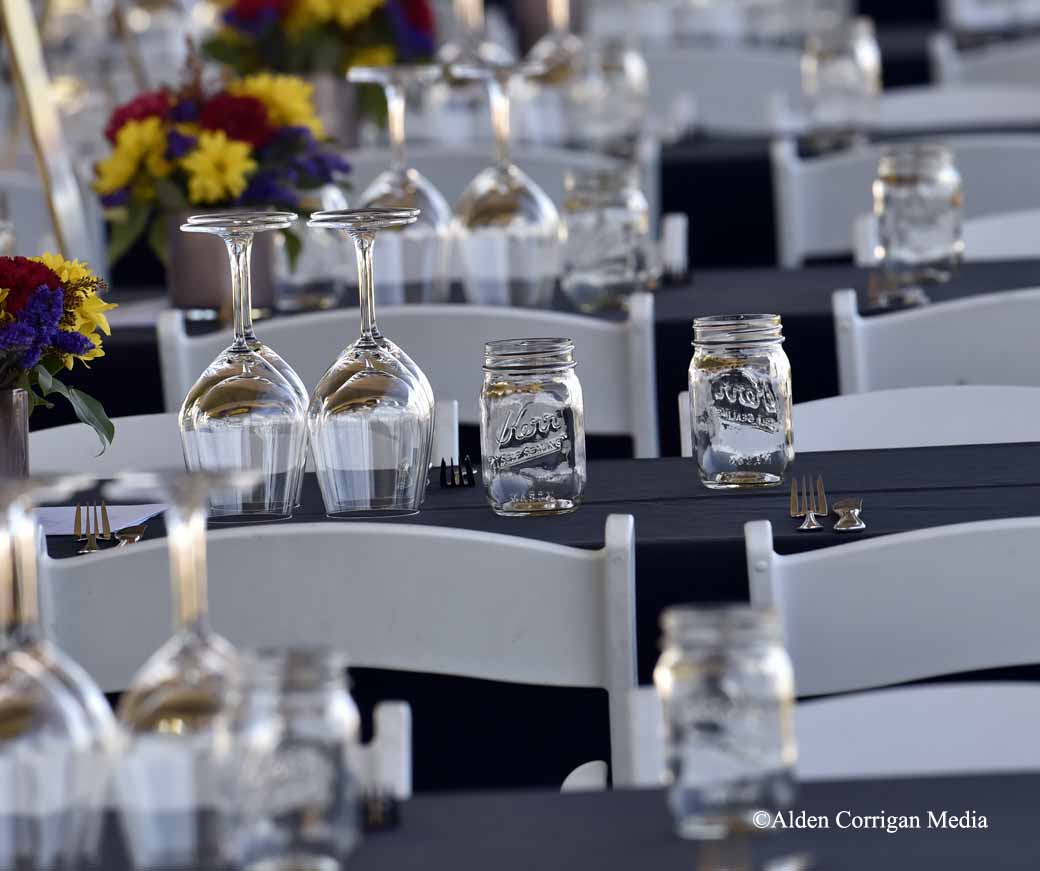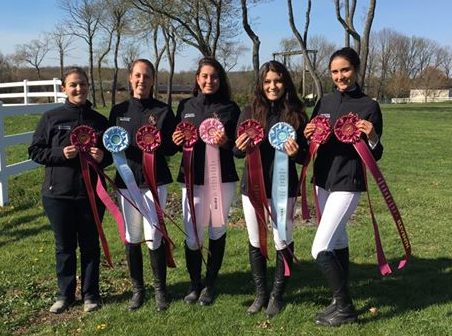After this, you’ll know how to dance; lots of nice movement. – Mike Perez
A few weeks back Katie and I got the chance to interview Sheila Varian of Varian Arabians; a story that we’ll share with you all soon. After chatting with Sheila and going to see the amazing horses they have there, she invited us back to audit their Hands On Clinic for an up close look into the Varian way of starting and training horses. It was an amazing experience and I’d love to share a few of the things I learned.
The description on their website,
[The clinic will] offer techniques that will give you the skills to take your handling/riding to the next level and the skills to communicate with your horse as never before,
is pretty spot on.
First off, the Varian Arabians Hands on Clinic is a two day event at the Varian Ranch in Arroyo Grande where 17 horse and person pairs get to work together both in-hand and under saddle under the instruction of guests Eitan Beth-Halachmy, Marjie Becker, and Mike Damianos as well as Jaime Hernandez and Mike Perez, the respected in-house trainers at Varian. I, along with about 30+ others audited the clinic from the sidelines. Both Saturday and Sunday, in-hand work was done in the morning, and under saddle in the afternoons. Breakfast and lunch was provided and ample break time was given to see the ranch and meet the horses residing there, including under saddle and halter presentations of their current stallions.
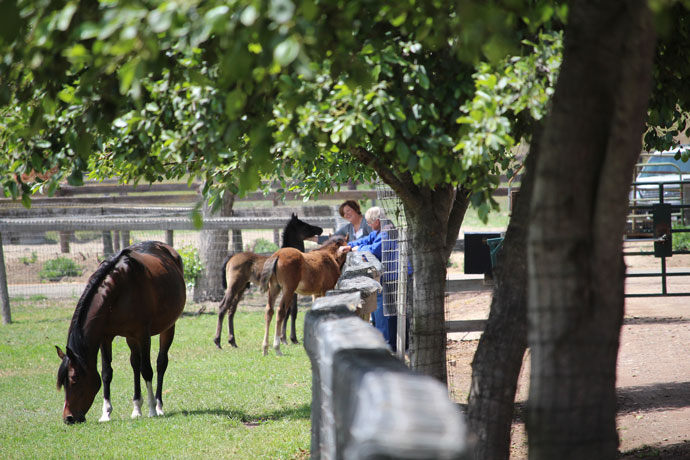
If you follow along with the SLOHN weekly emails, as I hope you do, I talked last week about the basics. This clinic really affirmed the basics for me; that every advancement you make in the saddle is established on the ground and that great horsemen and horsewomen are great because they perfect the basics.

“You do what a horse particularly needs” – Sheila Varian
Each horse is different and needs to be taught in it’s own specific way. Some horses are more stubborn and firmer, some are very sensitive. You need to read the horse you’re working with and adjust your approach as necessary to get the best communication.
“Training starts when the halter goes on.” – Eitan Beth-Halachmy
An important thing to remember is that horses are always learning, and they pick up everything, both good and bad. If they get away with a behavior from the barn to the arena, they think they can get away with it in the arena, so there’s no difference to them in this case. It’s important to help them learn the correct behavior from the moment you interact with them to the final touch before you put them away.

“You don’t pull your horse. They push from behind, so give them space in the rope and push them forward with the whip.” – Mike Perez
We all know that horses are rear-end driven, but often forget this applies on the ground as much as it does in the saddle. When first working with a horse in-hand, don’t just pull on their face to get them to move, use a training aid like a whip (see picture) to help remind them to engage their back end and keep up.
“The walk is the foundation of horsemanship” – Eitan Beth-Halachmy
All to often with new horses we want to skip the slow boring stuff and go right to running effortlessly with the wind in our hair. As Eitan pointed out, the walk is the foundation of horsemanship because it’s both where you establish a relationship with your horse in the saddle and where you fine-tune the small details that can often be overlooked at greater speeds.
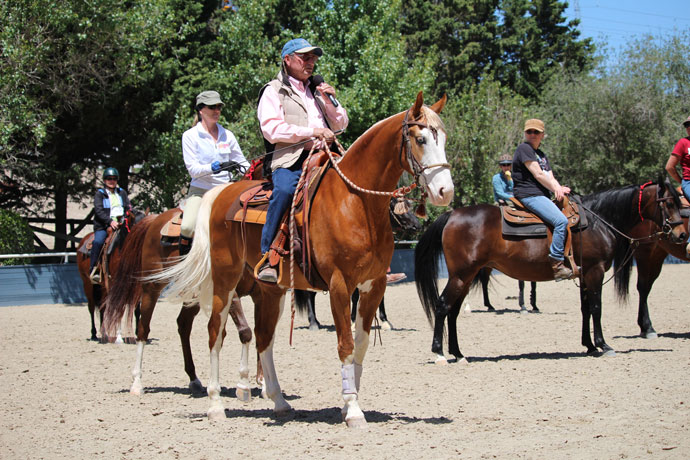
“I start the week in a snaffle and switch it up as the week goes.” – Mike Damianos
Before this clinic, the idea of giving a horse a variety of bits throughout a week had never crossed my mind. It’s a great point though. Horses can quickly become dull and changing the bit helps to keep things fresh and new – helping them to better pay attention and be more responsive to cues.
“It’s as important to teach a horse to back out of a trailer as it is to teach them to get in.” – Sheila Varian
Again, this is one of the basics that is often missed as we try to rush through things with horses. It’s an important step because it establishes consistency and safety. Think about it, you put yourself in front of a flighty 1,000-pound animal in a tiny metal box. This skill also ensures a consistent experience for other people (like trainers) a better experience with your horse.
All in all, I took over 3 full pages of notes and what I learned has really helped me approach working with horses in a new way. I’m for sure going to sign up next year for the full experience and I hope many of you join me!
To find out about more upcoming events at Varian Arabians, visit http://www.varianarabians.com/events.asp.

